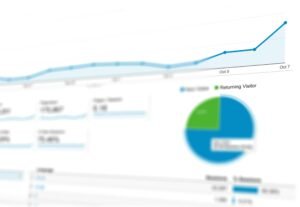Google Revamps Ad Auction for Holiday Shopping Surge: What Advertisers Need to Know
Google is rolling out a significant update to its ad auction dynamics that is set to shake up digital marketing strategies ahead of the crucial holiday shopping season. Starting in October, changes will be made to how Performance Max (PMax) and Standard Shopping campaigns compete in ad auctions. The highest Ad Rank will now determine which ad serves for overlapping campaigns, introducing greater flexibility for advertisers aiming to optimize their efforts during this peak shopping period.
A New Approach to Ad Auctions
The latest adjustment by Google aligns PMax and Standard Shopping campaigns with broader auction behaviors, allowing advertisers more control. This shift reflects Google’s ongoing commitment to enhancing AI-driven advertising while equipping marketers with tools to better target their audiences.
The impact of this change cannot be understated, especially with recent data from a TransUnion study showing Performance Max campaigns achieved a 17% higher Return on Ad Spend (ROAS) compared to AI-powered social campaigns during the 2023 Q4 holiday peak. With this adjustment, advertisers are encouraged to fine-tune their strategies, adjusting budgets and targets to capitalize on enhanced ad performance.
Mike Ryan, Head of Ecommerce Insights at Smarter Ecommerce, expressed positivity regarding the update. “Google anticipates the update to have a neutral or positive impact on account-level performance. By allowing campaigns to compete on an even footing, advertisers can better allocate resources where they’ll be most effective,” he said.
Strategic Implications for Advertisers
With the holiday shopping season being a pivotal moment for retailers, the changes to ad auction dynamics compel advertisers to reassess their strategies. Performance Max campaigns, in particular, demand careful consideration to maximize success. Advertisers should ensure their campaigns maintain URL expansion and quality asset groups to deliver optimum results.
Local advertising consultant Jane Thompson highlights the strategic significance of Google’s update. “Advertisers in competitive markets need to stay agile and responsive. The new ad auction mechanism offers the most adaptive players an opportunity to outshine the competition,” she advised.
Community Impact: Preparing for the Holiday Rush
The implications of these changes are expected to ripple through businesses across the United States. Retailers, both large and small, are gearing up for the holiday shopping season—a period that can make or break their fiscal year. For many local businesses, the ability to compete effectively online is more crucial than ever.
Mark Wilson, owner of a popular electronics store in Dallas, Texas, underscored the potential local impact. “With the digital marketplace growing ever more crowded, these changes offer a chance for smaller businesses to compete more fairly, provided we adapt quickly,” he remarked.
Previous Market Adaptations
This strategic shift comes against a backdrop of evolving digital advertisement practices. In recent years, Google’s continuous updates to its advertising policies have mirrored broader industry trends towards greater automation and integration of AI tools.
As advertisers accommodate these changes, the focus on optimization through SEO and AI-driven insights has never been more pronounced. Recognizing patterns, trends, and consumer behaviors through advanced analytics will be vital for businesses aiming to capture their share of the holiday market.
Balancing Perspectives and Concerns
However, as with any major shift, there are varying opinions on its implementation and wider implications. Some advertisers express concern about the potential learning curve and the need for rapid adaptations in strategies and budget allocations. Balancing these concerns with the potential benefits requires careful analysis and engagement with reliable data sources.
Kathy Tran, a digital marketing strategist based in San Francisco, cautions, “While these changes offer new opportunities, there’s a risk of increased complexity in campaign management. Companies must equip their teams with the right skills to navigate these changes effectively.”
Guidance and Resources
As advertisers navigate this new landscape, resources and best practices will be key. Business owners and marketers should stay informed through industry webinars, such as those provided by marketing organizations, to learn the nuances of the updated ad auction dynamics.
Understanding Google’s strategy and leveraging available platforms and insights will be pivotal for success. Community workshops and digital marketing forums could also play an essential role in providing advertisers with the knowledge they need to adapt.
In conclusion, Google’s overhaul of ad auction dynamics presents both challenges and opportunities for advertisers preparing for the holiday shopping surge. By aligning with broader auction behaviors and emphasizing strategic flexibility, businesses have a chance to harness AI tools more effectively. As the holiday season approaches, the emphasis will continue to be on maximizing digital ad efficacy to meet consumer demand and achieve business objectives.




